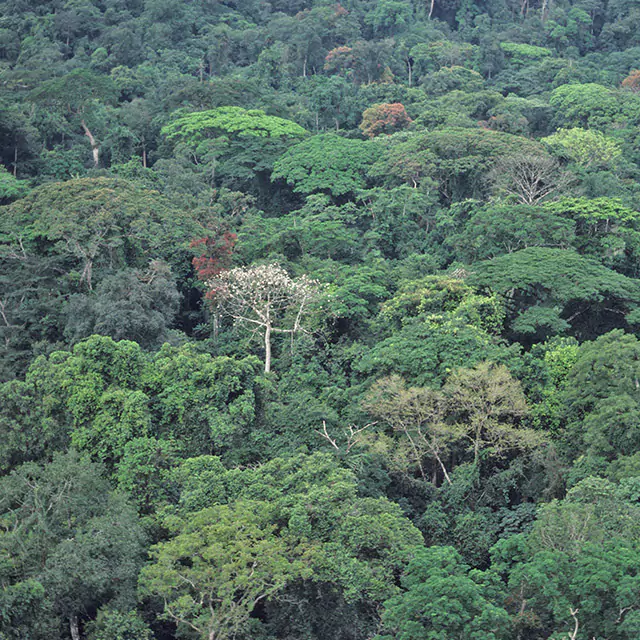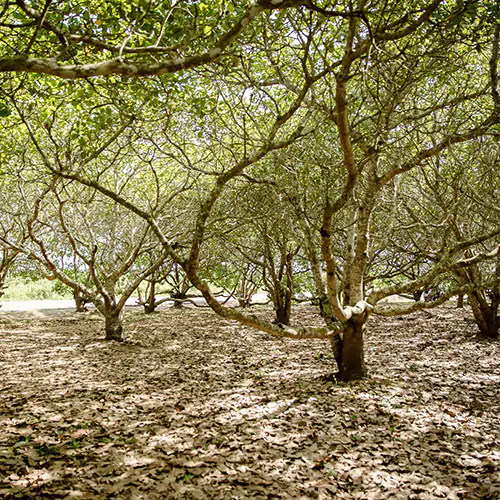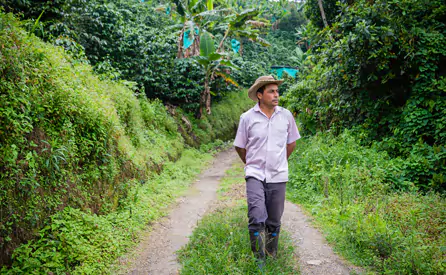Every crop we grow is part of a much bigger, and often delicate, ecosystem. Sometimes even minor changes can have significant and unintended consequences for nearby animals and plants, creating biodiversity risks that affect both tiny insects and large mammals.
As much as 60% of global biodiversity loss is attributed to agriculture and food production. It’s therefore vital the industry finds ways to protect and regenerate natural ecosystems in line with UN Sustainable Development Goals 13 and 15. These goals aim to tackle the impacts of a warming climate, promote sustainable ecosystems and halt biodiversity loss.
Our initiatives include:
Implementing the Living Landscapes Policy. This sets out our approach to achieving ‘net positive’ impact, our vision of putting more back into a landscape than is taken out through ingredients production. This includes protecting the rights of communities, as well as flora and fauna.
Ensuring that our own operations use no more productive land than is absolutely necessary, and protecting High Carbon Stock and High Conservation Value areas.
Working with farming communities to help them become stewards of the environment, providing training such as on use of pesticides to protect pollinators, and avoid deforestation.
Implementing the Supplier Code. Supporting our goal to purchase raw materials, products and services that are produced in a manner that is socially responsible, economically profitable and environmentally sustainable.
Seeking partnerships with other organisations such as customers, not for profits and governments to regenerate landscapes.
Goals and Progress
We report on the goals and targets in the Natural Capital section of our 2020 Annual Report. Updates include:
- How the Almonds team is looking to improve long-term bee health and pollination.
- How we are using satellite technology to strengthen our Forest Loss Risk Index for greater mapping accuracy and resolution of third-party supply chains.
- As part of our ambition for AtSource Infinity programmes to act as a test-bed for innovation, we are working with the LandScale platform to monitor progress for coffee grown in Mexico.
- How ofi's cocoa has entered into a partnership with International Union for the Conservation of Nature (IUCN) to help restore degraded Natural Capital areas in Ghana. This is to help cocoa communities take ownership of their landscape with improved environmental stewardship. The aim is to increase tree carbon stock through forest protection and restoration, and create a 30% reduction in natural capital costs in line with the Cocoa Compass sustainability strategy.
Monitoring through AtSource+
AtSource+ allows customers to measure changes in biodiversity and sustainable land use in several ways. This includes mapping forest cover and tracking the proportion of trees that are lost in a farming area, as well as understanding the interventions that are being made to regenerate those landscapes. The key metrics available in AtSource+ include:
Percentage of tree cover loss in farmer group area, using data from Global Forest Watch
Number of farmers in a high-risk farmer group trained on positive landscape management
Number of farmers in high-risk farmer group whose GPS coordinates have been mapped
Number of shade trees distributed to farmer groups
Percentage of farm holding under protection or conservation
Conservation through education
How farmer education is paving the way for conservation and restoration
AtSource+ metrics to track progress:
- Forest Loss Risk Index (FLRI) (%)
- Number of shade trees distributed
Tropical Indonesia is home to some of the most unique wildlife in Asia, including the native Java gibbon - the world’s most threatened primate - and the Java hawk-eagle, which lives in the shade of rainforest canopies. These endangered species are now at risk of severe habitat loss caused by increasing human development
To tackle deforestation and habitat loss, Olam developed the Forest Loss Risk Index (FLRI), which identifies deforestation risk hotspots and assigns an individual risk weighting to each farmer group using AtSource+. This allows ofi and its customers to target interventions where they are needed most and track progress, for example the number of trees distributed.
Since 2015, we have trained more than 1,100 farmers working in the Ciwidey and Garut forests of Indonesia to identify and protect these endangered animals on and around their farmland. We have also demarcated some 1,191 hectares of land as safe zones for endangered animals, in support of the Indonesian Government’s conservancy plan.
Mr Aca, a coffee farmer living near the habitats of Java hawk-eagle and Java gibbons, has felt the benefits of this training: “I had never seen these animals before, but now I know and if they come to my farm, I just let them be. I’ve learned that they live just beside the mountain, near my farm, and sometimes we even hear them!”
Read ofi news
The cocoa business is working in partnership with The Nature Conservancy, Mondelēz International, Partnerships for Forests and Instituto Humanize, to halt deforestation and restore degraded land in the Brazilian state of Pará, which has the country’s highest rate of deforestation.
On a tropical mountainside of the Frailesca region in Mexico, farmers are planting new coffee saplings and forest trees.
- Transparency in Coverage
- Modern Slavery Statement
- CA Supply Chain Transparency Act
- Transparency in Coverage
- Modern Slavery Statement
- CA Supply Chain Transparency Act
Copyright © 2024
Olam International Limited. All Rights Reserved. Co Reg No: 199504676H





